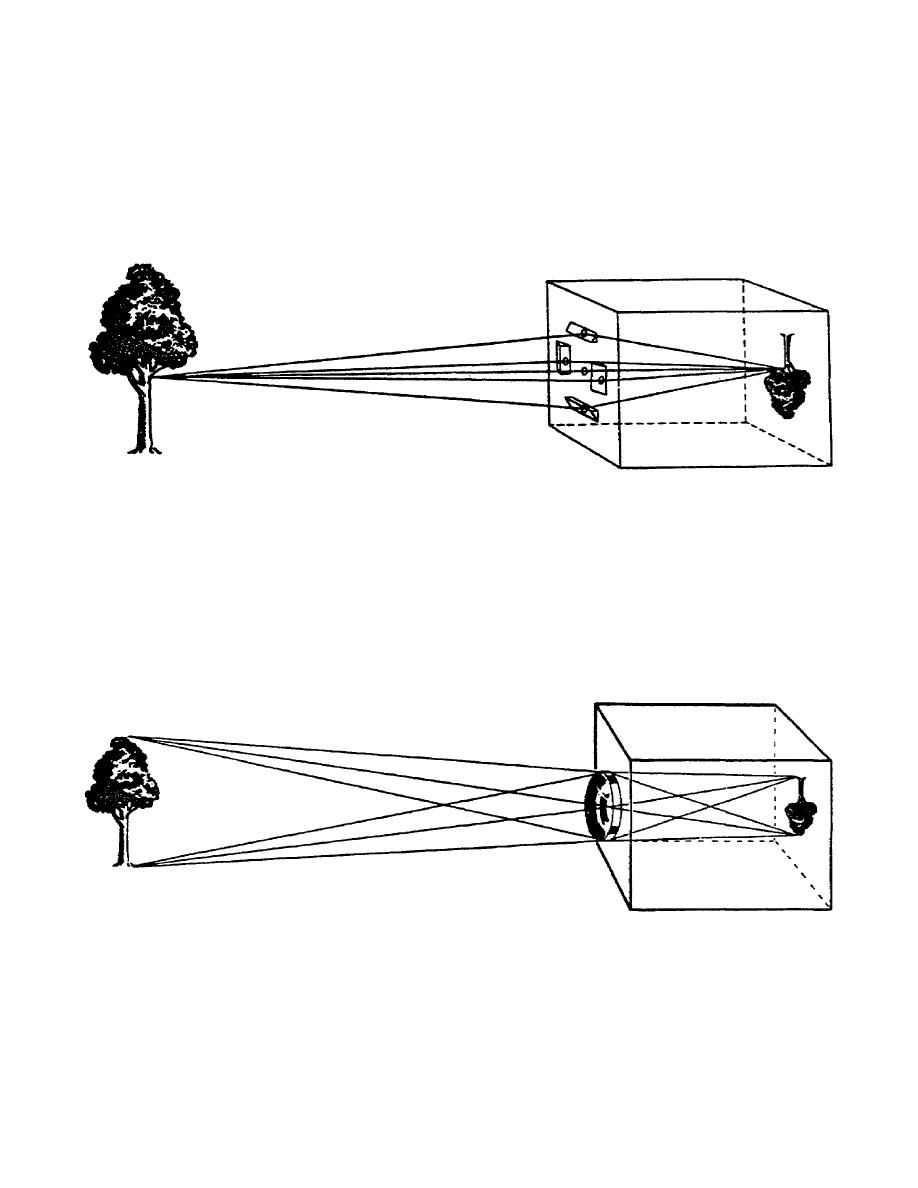
If these four images could be made to coincide with the center one, the result
would be an image five times as bright as the image made by the one center
pinhole.
c. Next, use the principle of refraction to make these four images
coincide with the center one.
In other words, place a prism behind each
pinhole so that the light forming each of the four images is refracted to form
a single image.
This image is about five times as bright as the original
image, (fig 2-4).
Figure 2-4.
Separate images made to coincide.
d. The theory discussed above indicates that the brightness and sharpness
of the image depends upon the number of pinholes and prisms used. However, a
lens consisting of numerous pinholes and prisms would be too cumbersome for
practical use.
e. The camera lens, therefore, consists of a series of prisms
incorporated in a single circular piece of glass, and the image is formed in
the same manner as if two prisms were placed base to base. This eliminates the
need for individual pinholes and prisms, (fig 2-5).
Figure 2-5.
Formation of an image by a lens.
84



 Previous Page
Previous Page
